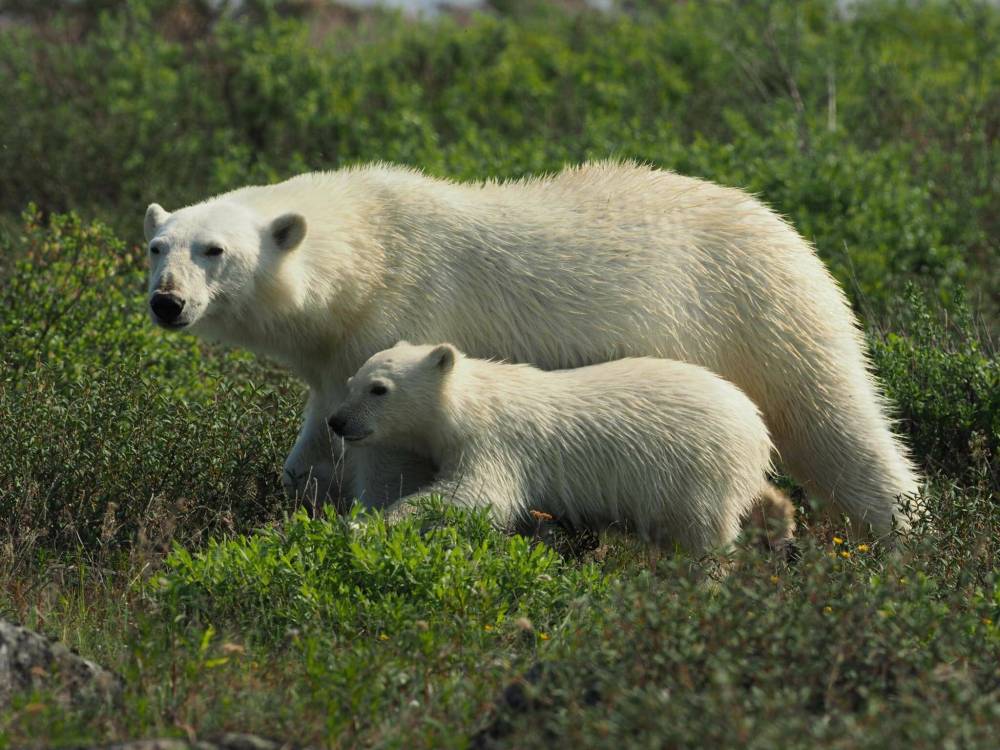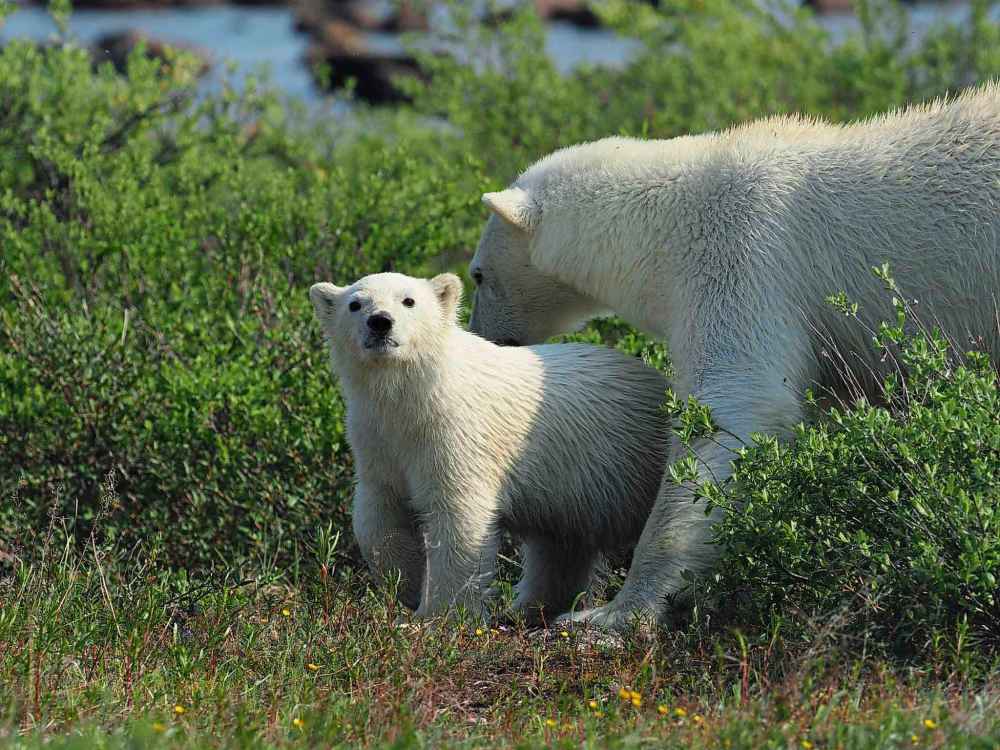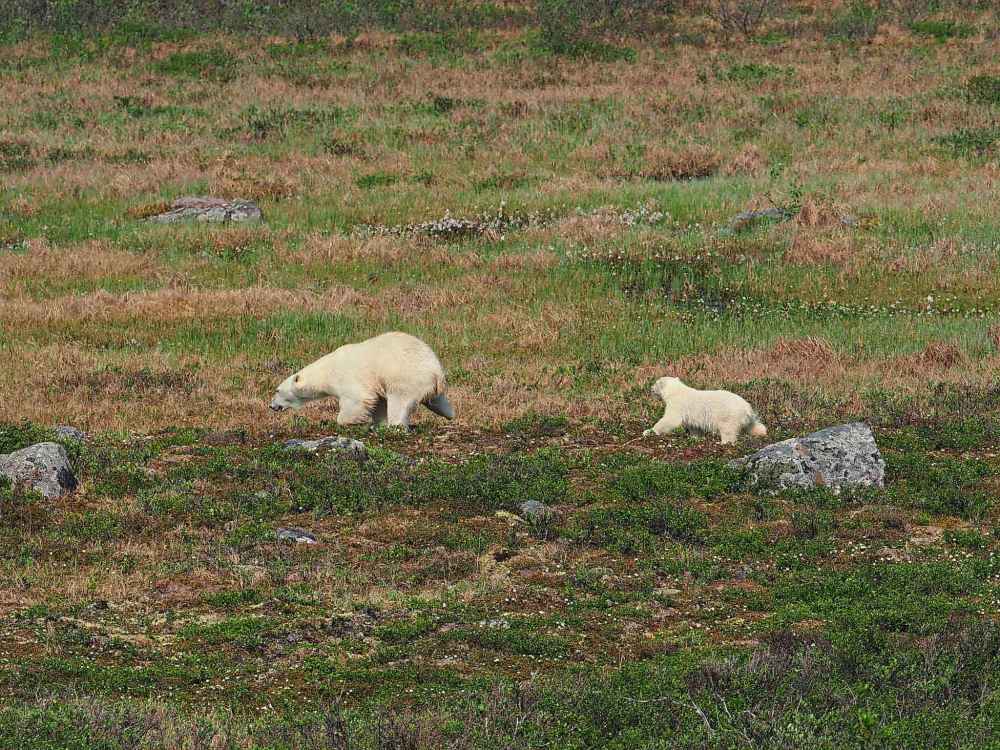Icy endurance A leg short, mama bear toughs it out amid Arctic’s brutal extremes
Read this article for free:
or
Already have an account? Log in here »
To continue reading, please subscribe:
Monthly Digital Subscription
$0 for the first 4 weeks*
- Enjoy unlimited reading on winnipegfreepress.com
- Read the E-Edition, our digital replica newspaper
- Access News Break, our award-winning app
- Play interactive puzzles
*No charge for 4 weeks then price increases to the regular rate of $19.00 plus GST every four weeks. Offer available to new and qualified returning subscribers only. Cancel any time.
Monthly Digital Subscription
$4.75/week*
- Enjoy unlimited reading on winnipegfreepress.com
- Read the E-Edition, our digital replica newspaper
- Access News Break, our award-winning app
- Play interactive puzzles
*Billed as $19 plus GST every four weeks. Cancel any time.
To continue reading, please subscribe:
Add Free Press access to your Brandon Sun subscription for only an additional
$1 for the first 4 weeks*
*Your next subscription payment will increase by $1.00 and you will be charged $16.99 plus GST for four weeks. After four weeks, your payment will increase to $23.99 plus GST every four weeks.
Read unlimited articles for free today:
or
Already have an account? Log in here »
The staff at Churchill Wild’s Seal River Heritage Lodge have seen countless polar bears emerge from Hudson Bay’s treacherous ice over the decades, but nothing prepared them for what walked ashore last week.
A three-legged female polar bear, nicknamed Tripod, who has defied every survival rule in the Arctic, appeared at the remote ecolodge 60 kilometres north of Churchill with something that should have been impossible: a healthy cub trailing behind her.
In a landscape where even healthy polar bears face brutal odds, Tripod’s existence represents one of nature’s most incredible comebacks.
STEVE PRESSMAN PHOTO A blueberry-stained Tripod has defied survival expectations.
Tripod first showed up at Seal River in the fall of 2021 with part of her right hind leg missing, most likely the result of it getting crushed in Hudson Bay’s shifting ice. Everyone figured she’d be dead by spring. The mortality rate of healthy young polar bears is around 50 per cent, never mind one with a missing hind leg.
“She’s likely around seven years old now,” said Churchill Wild CEO Adam Pauls. “When we first saw her in 2021 she had probably recently separated from her mother. She would have been around three at the time.”
Tripod kept showing up. At Seal River. At Dymond Lake Ecolodge. Even in Churchill, where locals called her Hercules, though the lodge staff stick with Tripod.
STEVE PRESSMAN PHOTO Tripod was first spotted at Seal River, northwest of Churchill, in the fall of 2021 with part of her right hind leg missing, likely the result of it being crushed in Hudson Bay’s shifting ice.
Mike Reimer, who co-founded Churchill Wild in 1993 with his wife Jeanne, has worked with polar bears since 1981. He’s never seen anything like it.
“It’s a phenomenally tough environment they’re in already, even if they’re healthy and have all four legs and all their teeth,” said Reimer.
“It’s a brutally tough world. They live on a moving, mobile, erratic, unsafe ice pack, and they’re constantly battling the elements, not to mention other bears and wolves. It’s a miracle that she didn’t become food for another bear because of her handicap. Bears will eat other bears if they get the chance. The minute they see a weakness, they attack.”
“It’s a miracle that she didn’t become food for another bear because of her handicap.”–Mike Reimer
Polar bears need to haul 200- to 300-pound seals out of breathing holes on the sea ice using their hind legs and back muscles, exactly what Tripod can’t do properly. And they need about one seal per week to maintain a healthy weight and thrive.
“Who knows what she caught out there,” Reimer said. “But obviously she stayed healthy. And not only is it the challenge of finding food, it’s the challenge of warding off other bears that are trying to scavenge the kill once she makes one.”
Kathryn Cehrs, a veterinarian from California, visited Seal River in summer 2023. Tripod was walking so well it took Cehrs a while to figure out she was without part of her leg.
“It took me a bit to realize that she was missing a paw because she does use that other leg,” said Cehrs. “I remember just being amazed by her because she survived that injury, the blood loss and infection, and she’s still thriving to the point that she was at a really healthy body weight for that time of year.”
QUENT PLETT PHOTO "We were all thrilled to see her, and then all of a sudden we saw that she had a cub and then we were really excited,” says Churchill Wild's Tyler Warkentin.
Tyler Warkentin handles maintenance at Churchill Wild’s lodges and was among the first to spot Tripod’s return.
“Ben (Ben Lawrence, who co-manages the lodge with his partner Nicole Spinks) saw her coming off the ice,” said Warkentin. “She was out on the point and she and her cub walked to within 20 feet of the lodge fence. We were all thrilled to see her, and then all of a sudden we saw that she had a cub and then we were really excited.”
Wildlife photographer Steve Pressman of YouGottaLoveNature.com first captured images of Tripod in September 2023. “It was amazing something like that could actually exist and be alive when you thought you would never see it again,” he said. “And here she shows up with a baby.”
Polar bears mate between March and May. On the western Hudson Bay coast they spend the summers on land, and the females then den in October as the males head back out onto the ice for winter hunting. The females give birth between November and January, and the tiny cubs stay in the den for the first few months.
Mom then heads back out onto the sea ice with her cubs to hunt in March and April, before returning to land for the summer with her cubs, as Tripod recently did.
Quent Plett has worked for the Reimer family for more than 40 years and now primarily guides film crews at the Churchill Wild ecolodges.
“I’ve never seen a three-legged bear before. And it’s amazing that this bear seems to be doing well. It’s not famished or thin. It looks healthy.”–Quent Plett
“I’ve never seen a three-legged bear before,” said Plett. “And it’s amazing that this bear seems to be doing well. It’s not famished or thin. It looks healthy.
“A female polar bear has to put on some pounds to make it through that fasting time and produce enough milk for its cub. And it’s pretty cool that a three-legged bear can catch enough prey to do that.”
Tripod’s got bigger problems now. Male polar bears will kill cubs so the mother will mate again sooner, and wolf packs hunt newborn cubs. And the ice-free season is also generally longer than it used to be, which means more time facing those dangers on land.
“When we work with our wolves, and run the wolf safaris in February and March, we see the wolves hunting those cubs as they exit the den,” Reimer said. “So she might well have to fight off a pack of wolves to get that cub safely out to the ice.”
QUENT PLETT PHOTO Female polar bears give birth in early winter, and the cubs stay in the den for the first few months. Mom then heads back out onto the sea ice with her cubs to hunt in early spring before returning to land for the summer, as Tripod and her cub recently did.
Even though attitude matters more than anatomy when it comes to defending cubs, how will Tripod be able to do it?
“The same way a four-legged bear would — with a lot of enthusiasm,” said Plett. “Even if the female is half or even a third the male’s size, if she’s aggressive enough, the male will back off. If she’s got enough zip in her, that goes a long way.”
Reimer echoed the sentiment about maternal aggression: “If they’re threatened, if their cubs are threatened, they just turn berserkers. They go absolutely bananas on any bear that approaches. There’s no vet coming to help them out if they get hurt. It’s a dog-eat-dog world out there and you’re just food. You weaken, you get injured and you’re going to die. But based on her ability to hunt and survive with three legs, she’s probably going to be a pretty fierce protector.”
The Reimers, who co-founded Churchill Wild, pioneered polar bear walking safaris in 1993 when they took an abandoned whaling shack and turned it into Seal River Heritage Lodge. The company is now acknowledged worldwide as the leading provider of luxury polar bear walking tours and safaris out of permanent ecolodges on Canada’s Hudson Bay coast.
Their family history on the coast goes back more than 80 years and their properties have hosted more than 9,000 guests who wanted to see polar bears up close at ground level. The couple won the Lifetime Achievement Award from the Tourism Industry Association of Canada in 2024.
Churchill Wild now owns and operates three luxury ecolodges on the coast including Seal River Heritage Lodge, Nanuk Polar Bear Lodge and Dymond Lake Ecolodge, as well as their newest property, the Blueberry Inn in Churchill.
Both Seal River Heritage Lodge and Nanuk Polar Bear Lodge were early members in the National Geographic Unique Lodges of the World collection when that program was operating.
Their polar bear walking safaris run from July through November. Not surprisingly, many people don’t realize they can see polar bears during the summer, when they’re on land waiting for the ice to return. Churchill Wild also runs specialized safaris in February, March and December.
QUENT PLETT PHOTO Tripod's got a big job ahead of her in protecting her cub: Male polar bears will kill cubs so the mother will mate again sooner, and wolf packs hunt newborn cubs.
“We’ve been at it for over three decades with Churchill Wild,” said Reimer. “Every year there’s something exceptional. Even after all those experiences, we’ve had thousands of bear encounters, and we’ve observed polar bears in every season in every kind of situation, and we’ve never seen anything like this.”
Tripod’s appearance with her cub demonstrates every quality we want to see in ourselves. Grit, caring, courage and toughness. She illustrates what a mother’s love can do against all odds. Her three-legged walk proves nature doesn’t recognize the impossible.
This isn’t just about a polar bear who lived and overcame. It’s about what drives mothers to turn weakness into strength, to prove that when the world says no, their love says yes.

George Williams
George Williams began his career as a horse-racing writer for the Daily Racing Form in 1990. He's a five-time winner of the Sovereign Award, presented annually for an outstanding newspaper or feature story about horse racing in Canada.
Our newsroom depends on a growing audience of readers to power our journalism. If you are not a paid reader, please consider becoming a subscriber.
Our newsroom depends on its audience of readers to power our journalism. Thank you for your support.
History
Updated on Friday, July 4, 2025 11:11 AM CDT: Corrects reference to Quent Plett
Updated on Friday, July 4, 2025 11:14 AM CDT: Corrects photo cutline
